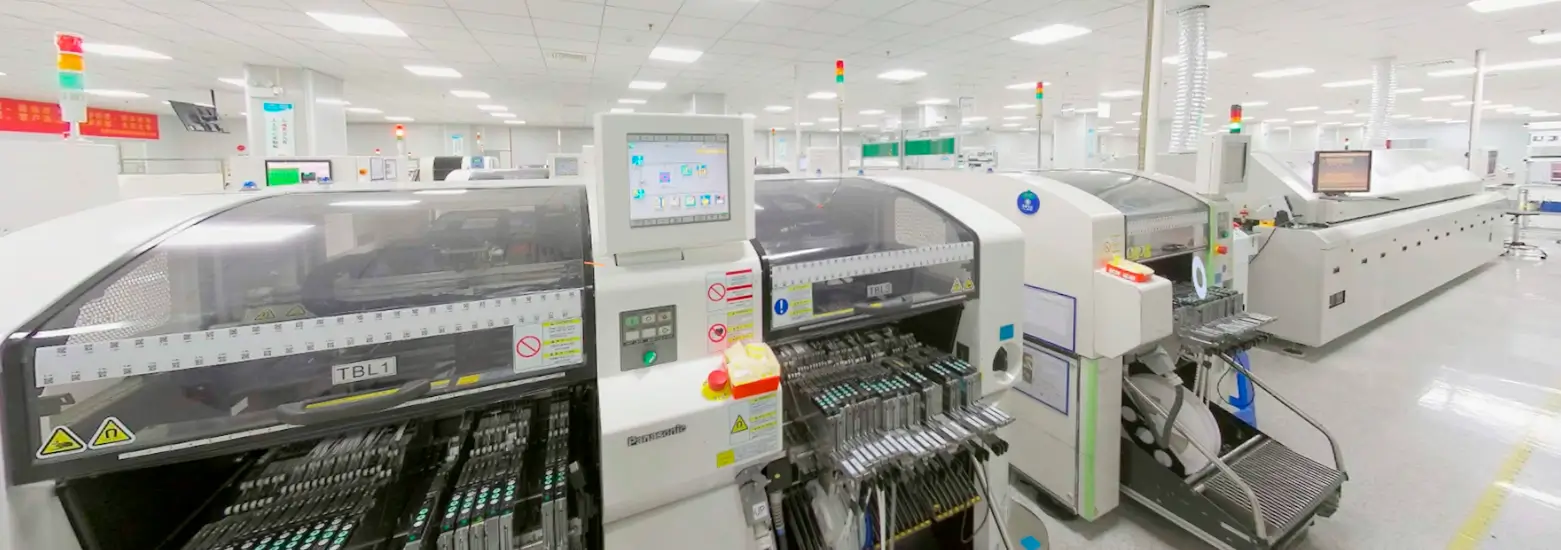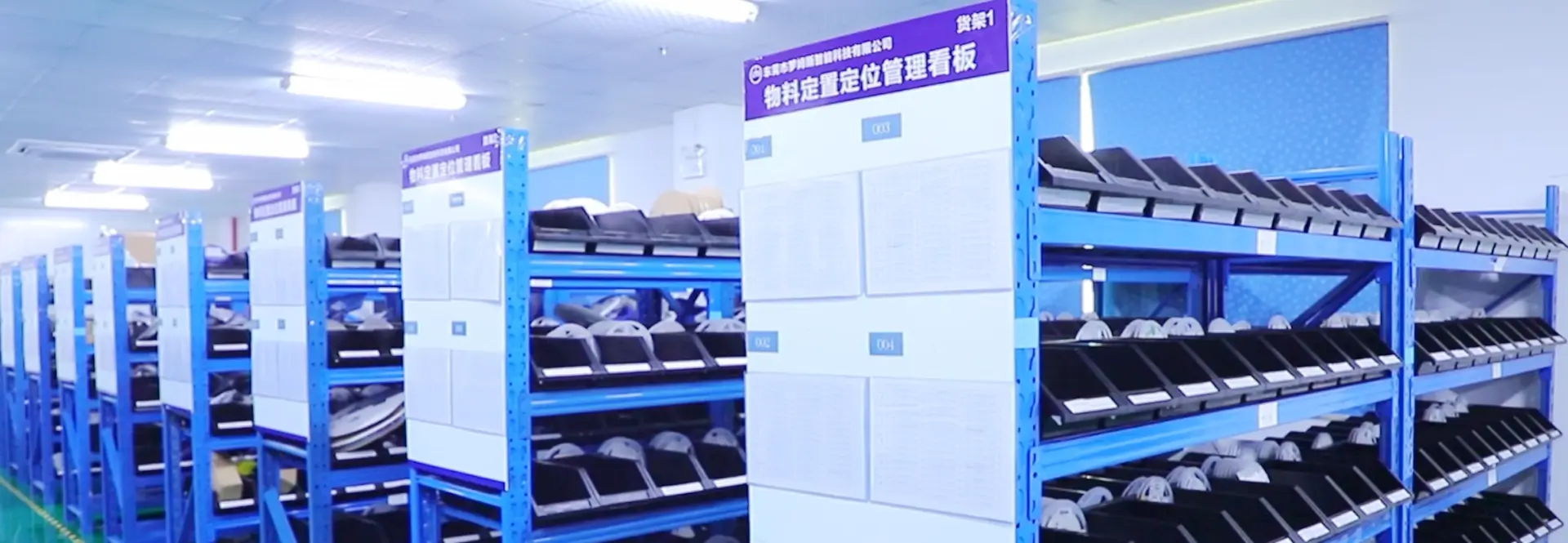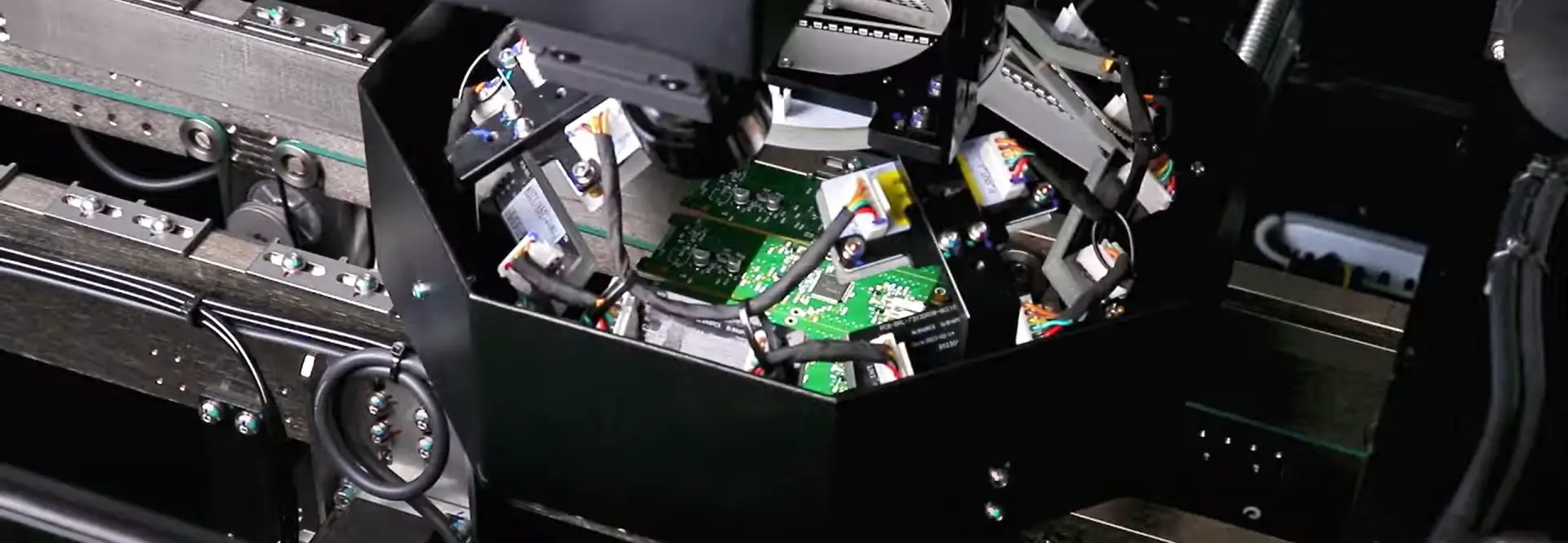SMT (Surface Mount Technology) Production Stage
The Precision Cornerstone of Electronics Manufacturing, the First Step from Chip to Product
SMT (Surface Mount Technology) is an assembly process in which electronic components are directly mounted onto the surface of a PCB (Printed Circuit Board).
In modern electronics manufacturing, whether in smartphones, wearable devices, automotive electronics, or medical equipment, SMT is an indispensable core process.
In modern electronics manufacturing, whether in smartphones, wearable devices, automotive electronics, or medical equipment, SMT is an indispensable core process.
SMT Process Flow
1️⃣ Solder Paste Printing
- Using a stencil or laser-cut template, solder paste is precisely printed onto the PCB pads
- The quality of the solder paste and printing accuracy directly affect subsequent placement and soldering quality
- We use fully automated solder paste printers equipped with SPI (Solder Paste Inspection) systems to monitor the solder volume and printing deviation of each pad in real time
2️⃣ Pick and Place
- High-speed pick-and-place machines accurately pick and position various surface-mount components (such as resistors, capacitors, ICs, BGAs, etc.) based on the placement file
- Supports ultra-small components (down to 01005 package) as well as odd-form components
3️⃣ Reflow Soldering
- The PCB with mounted components passes through the reflow oven, where a controlled heating profile melts the solder paste and forms reliable solder joints
- We use 10-zone high-precision reflow ovens that can be programmed with optimized thermal profiles for different materials, ensuring robust and void-free solder joints
- Supports lead-free reflow (RoHS compliant) and multiple alloy solder systems
4️⃣ Automated Inspection (AOI / X-Ray / SPI)
- AOI (Automated Optical Inspection): Detects component misalignment, missing parts, polarity errors, solder bridges, and other defects in real time
- X-Ray Inspection: Provides non-destructive testing of hidden solder joints such as BGA and QFN packages
- SPI (Solder Paste Inspection): Measures solder paste volume, height, and area to prevent printing defects
Compared with traditional THT
Compared with traditional Through-Hole Technology (THT), SMT offers:
- Smaller component size and lighter weight
- Higher assembly density, saving PCB space
- High degree of automation in the manufacturing process, resulting in higher production efficiency
- Lower cost, higher reliability, and better vibration resistance
Component Types Supported by SMT
The main components we can handle include:
- Standard SMD components (Resistors, Capacitors, Inductors)
- Integrated Circuits (ICs: SOP, QFN, BGA, CSP, WLCSP packages, etc.)
- Passive components (Transformers, Inductors, Large Capacitors)
- Connectors
- Odd-form components such as micro antennas, sensors, and camera modules
Quality Control System
Our quality control throughout the SMT stage covers the entire process (Guangdong · Dongguan external manufacturing site):
Solder Paste Inspection (SPI) → Component Placement Inspection (AOI) → BGA/QFN Solder Joint Inspection (X-Ray) → Electrical Testing (ICT)
In addition, all production batches follow a First Article Inspection (FAI) procedure to ensure process stability and consistency before mass production.
Our SMT Production Line Capabilities
Guangdong · Dongguan External Manufacturing Site
| Item | Specification |
|---|---|
| Minimum Component Size | 01005 package (0.4mm × 0.2mm) |
| Minimum Pitch | 0.3mm (BGA package) |
| Supported Board Thickness | 0.4mm ~ 4.0mm |
| Maximum PCB Size | 510mm × 460mm |
| Minimum PCB Size | 50mm × 50mm |
| Single/Double-Sided Assembly Support | ✔ |
| Lead-Free / Leaded Process Compatibility | ✔ |
| Flexible PCB (FPC) Assembly Support | ✔ |
| ISO Certifications | ISO9001, ISO14001, ISO13485 |







